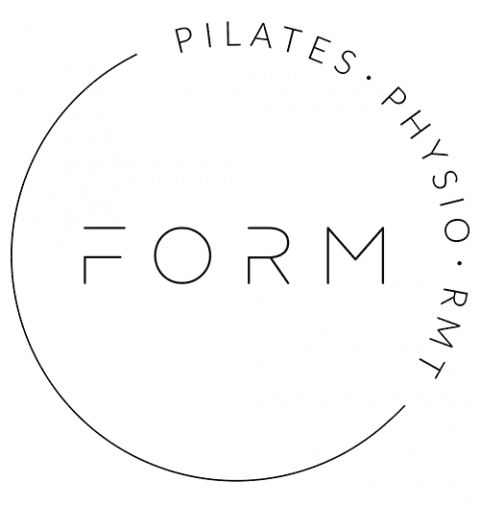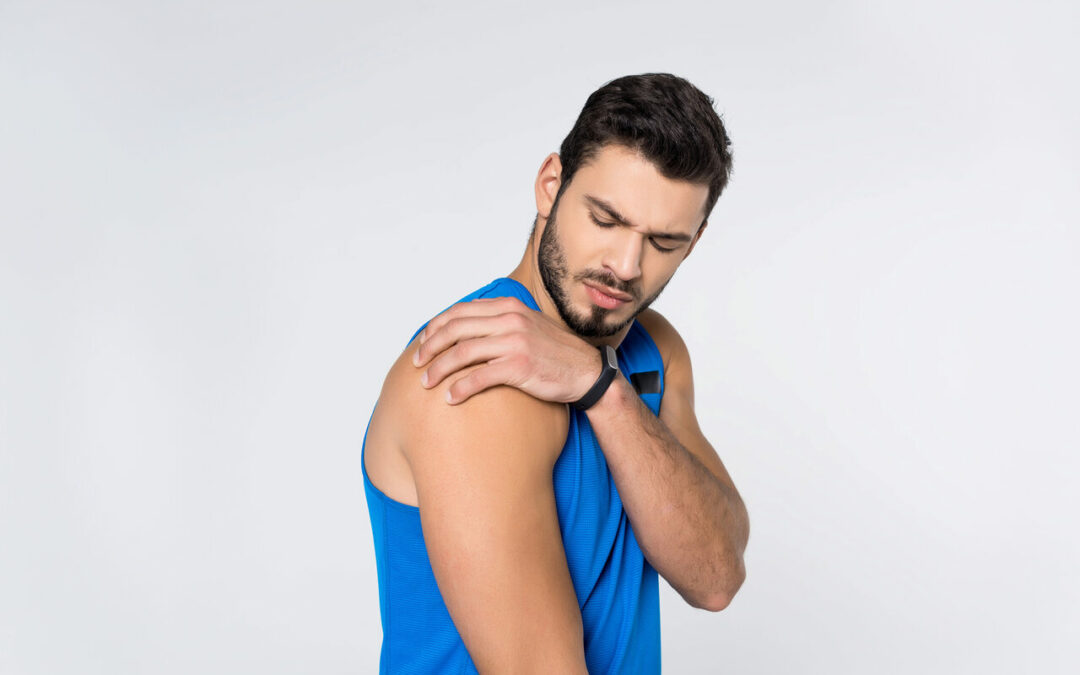Understanding Rotator Cuff Injuries
To effectively harness physiotherapy for rotator cuff injury recovery, it’s essential to first understand the anatomy of the rotator cuff, common causes of injuries, and the symptoms that impact daily life.
Anatomy of the Rotator Cuff
The rotator cuff is a group of four muscles and their tendons that stabilize the shoulder joint. These muscles and tendons work together to allow a wide range of arm movements. The four muscles comprising the rotator cuff are:
- Supraspinatus
- Infraspinatus
- Teres Minor
- Subscapularis
These muscles form a cuff over the head of the humerus, securing it within the shallow socket of the shoulder blade (scapula).
Common Causes of Rotator Cuff Injuries
Rotator cuff injuries can result from various factors, including:
- Repetitive Motion: Activities involving repetitive arm movements, such as painting or playing certain sports, can lead to overuse injuries.
- Aging: As we age, the tendons of the rotator cuff can degenerate, making them more susceptible to tears.
- Trauma: Sudden injuries, such as falls or lifting heavy objects, can cause acute tears in the rotator cuff.
- Poor Posture: Slouching or improper shoulder mechanics can increase strain on the rotator cuff.
Symptoms and Impact on Daily Life
Rotator cuff injuries can significantly affect daily life, causing pain and limiting movement. Common symptoms include:
- Shoulder Pain: Pain, especially when lifting the arm, can range from a dull ache to sharp, intense discomfort.
- Weakness: Affected individuals may experience muscle weakness, making it difficult to perform routine tasks.
- Limited Range of Motion: Difficulty in moving the shoulder, particularly in activities requiring overhead or behind-the-back movements.
- Night Pain: Pain that worsens at night, often disrupting sleep.
| Symptom | Description |
|---|---|
| Shoulder Pain | Ranges from dull ache to sharp discomfort |
| Weakness | Difficulty performing daily tasks |
| Limited Range of Motion | Trouble with overhead or behind-the-back movements |
| Night Pain | Increased pain at night, affecting sleep |
Understanding these symptoms is crucial for identifying the need for physiotherapy. Physiotherapy can play a significant role in mitigating these symptoms and promoting recovery. For more information on how physiotherapy can help with other conditions, such as physiotherapy for shoulder pain and physiotherapy for frozen shoulder, explore our related articles.
The Role of Physiotherapy
What is Physiotherapy?
Physiotherapy, also known as physical therapy, is a healthcare profession focused on diagnosing and treating physical impairments through various techniques. It aims to restore mobility, improve function, and reduce pain through customized treatment plans. This holistic approach addresses the root cause of the issue rather than merely alleviating symptoms.
Benefits of Physiotherapy for Rotator Cuff Injuries
Physiotherapy for rotator cuff injuries offers numerous advantages. It helps alleviate pain, improve shoulder function, and prevent future injuries. Here are some key benefits:
- Pain Reduction: Targeted exercises and manual therapy can alleviate pain.
- Improved Range of Motion: Stretching and strengthening exercises enhance shoulder mobility.
- Enhanced Muscle Strength: Strengthening the muscles around the shoulder supports the rotator cuff.
- Faster Recovery: Personalized treatment plans expedite the healing process.
- Prevention of Future Injuries: Educating patients on proper techniques reduces the risk of recurrence.
| Benefit | Description |
|---|---|
| Pain Reduction | Alleviates shoulder pain through targeted exercises |
| Improved Range of Motion | Enhances shoulder mobility through stretching |
| Enhanced Muscle Strength | Strengthens surrounding muscles for better support |
| Faster Recovery | Personalized plans expedite healing |
| Injury Prevention | Educates on techniques to reduce recurrence |
How Physiotherapy Aids in Recovery
Physiotherapy plays a crucial role in the recovery process for rotator cuff injuries. Here’s how it helps:
- Initial Assessment: A thorough examination identifies the specific injury and its severity. This assessment forms the basis of a personalized treatment plan.
- Pain Management: Techniques such as manual therapy, ice/heat application, and electrical stimulation are used to manage pain.
- Exercise Prescription: Specific exercises target the rotator cuff muscles, improving strength and flexibility. These exercises vary depending on the stage of recovery.
- Education: Patients learn about proper posture, ergonomics, and movement techniques to avoid further injury.
- Progress Monitoring: Regular follow-ups assess the progress and adjust the treatment plan as needed.
For more on how physiotherapy helps with various conditions, explore our articles on physiotherapy for shoulder pain and physiotherapy for tennis elbow.
By understanding the benefits and process of physiotherapy, we can better appreciate its role in recovering from rotator cuff injuries and returning to normal activities.
Getting Started with Physiotherapy
Embarking on a journey of physiotherapy for a rotator cuff injury involves understanding the initial steps and the techniques used throughout the recovery process. Here, we delve into the initial assessment and treatment plan, as well as the exercises and methods employed in physiotherapy.
Initial Assessment and Treatment Plan
The first step in physiotherapy for rotator cuff injuries is an initial assessment. During this evaluation, a physiotherapist will conduct a thorough examination to understand the extent of the injury, identify any contributing factors, and establish a tailored treatment plan. This assessment includes:
- A detailed medical history review
- Physical examination and observation
- Range of motion testing
- Strength assessment
- Pain evaluation
Based on the findings, the physiotherapist will create a personalized treatment plan. This plan outlines specific goals, the frequency of sessions, and the types of exercises and techniques to be used.
| Assessment Component | Description |
|---|---|
| Medical History Review | Discussing past injuries, surgeries, and overall health |
| Physical Examination | Observing shoulder alignment, posture, and movement patterns |
| Range of Motion Testing | Measuring the flexibility and mobility of the shoulder joint |
| Strength Assessment | Evaluating muscle strength and identifying weaknesses |
| Pain Evaluation | Understanding the intensity, location, and triggers of pain |
Exercises and Techniques Used in Physiotherapy
Physiotherapy for rotator cuff injuries involves a combination of exercises and techniques designed to promote healing, restore function, and prevent future injuries. Some common exercises and methods include:
-
Range of Motion Exercises: These exercises aim to improve flexibility and mobility in the shoulder joint. They often begin with passive movements, where the therapist moves the shoulder, and progress to active movements performed by the patient.
-
Strengthening Exercises: Focused on building the strength of the rotator cuff muscles and surrounding muscles, these exercises help stabilize the shoulder joint. Examples include resistance band exercises and weight-bearing activities.
-
Manual Therapy: This hands-on approach involves techniques such as massage, joint mobilization, and stretching to reduce pain, improve blood flow, and enhance tissue healing.
-
Electrotherapy: Methods like ultrasound and electrical stimulation can be used to reduce pain and inflammation, promoting faster recovery.
-
Postural Training: Teaching proper posture and body mechanics to prevent further strain on the shoulder and support long-term recovery.
| Exercise/Technique | Purpose |
|---|---|
| Range of Motion Exercises | Improve shoulder flexibility and mobility |
| Strengthening Exercises | Enhance muscle strength and joint stability |
| Manual Therapy | Reduce pain, improve circulation, and facilitate healing |
| Electrotherapy | Decrease pain and inflammation |
| Postural Training | Promote proper alignment and prevent future injuries |
For more information on various physiotherapy techniques, explore our articles on physiotherapy for shoulder pain and physiotherapy exercises for back pain.
By following a structured physiotherapy plan, we can effectively address rotator cuff injuries and work towards a full recovery. Remember to communicate openly with your physiotherapist to ensure the best possible outcomes.
Progressing Through Recovery
Monitoring Progress and Adjusting Treatment
In the journey of recovering from a rotator cuff injury, consistent monitoring and adjustment of the treatment plan are crucial. Our physiotherapists track progress using a combination of subjective feedback and objective measurements. This ensures that the treatment remains effective and aligned with the patient’s recovery goals.
| Measurement | Baseline | Week 4 | Week 8 | Week 12 |
|---|---|---|---|---|
| Pain Level (1-10) | 8 | 6 | 4 | 2 |
| Range of Motion (Degrees) | 30 | 50 | 70 | 90 |
| Strength (lbs) | 5 | 10 | 15 | 20 |
Regular assessments help in identifying any changes in the patient’s condition, allowing us to tweak the exercises and techniques used. Adjustments might include modifying the intensity, frequency, or type of exercises. This personalized approach ensures optimal progress and minimizes setbacks.
Gradual Return to Normal Activities
A gradual return to normal activities is essential to avoid re-injury. As the patient’s strength and mobility improve, we introduce functional exercises that mimic daily activities or specific movements required in their occupation or sport. These exercises help in building the necessary strength and endurance.
During this phase, patients are encouraged to:
- Perform gentle stretching exercises
- Engage in low-impact aerobic activities
- Gradually increase the use of the injured shoulder in daily tasks
Our goal is to ensure a seamless transition back to normal life while maintaining the health of the shoulder. For more tips on shoulder health, refer to our article on physiotherapy for shoulder pain.
By following a structured recovery plan, patients can regain functionality and reduce the risk of future injuries. For more information on how physiotherapy can aid in various conditions, explore articles like physiotherapy for knee pain and physiotherapy for acl tear.
Preventing Future Injuries
Importance of Proper Posture and Body Mechanics
Proper posture and body mechanics are crucial in preventing future rotator cuff injuries. When we maintain the correct posture, we align our bones and joints properly, reducing the stress on muscles and ligaments. This alignment is especially important for the shoulder joint, as improper posture can lead to imbalances and increased risk of injury.
Good body mechanics involve using our bodies efficiently and safely during various activities. This includes lifting objects correctly, avoiding repetitive motions that strain the shoulder, and ensuring that we do not overextend or overuse the shoulder joint. By being mindful of our body mechanics, we can significantly reduce the risk of reinjury and maintain shoulder health.
Tips for Maintaining Shoulder Health
To keep our shoulders healthy and reduce the risk of future injuries, we can incorporate several practices into our daily routine:
Regular Exercise
Engaging in regular exercise that targets shoulder strength and flexibility is essential. Exercises such as shoulder rotations, arm circles, and resistance band workouts can help maintain muscle balance and joint stability. For specific exercises tailored to shoulder health, refer to our article on physiotherapy exercises for back pain.
Warm-Up and Stretching
Before engaging in any physical activity, it is important to warm up and stretch the shoulder muscles. A proper warm-up increases blood flow to the muscles, while stretching enhances flexibility and reduces the risk of strains.
| Activity | Recommended Duration |
|---|---|
| Warm-Up | 5-10 minutes |
| Stretching | 10-15 minutes |
Ergonomic Adjustments
Making ergonomic adjustments to our workspaces can also prevent shoulder injuries. This includes adjusting the height of our desks and chairs, ensuring that computer monitors are at eye level, and using supportive chairs that promote good posture.
Rest and Recovery
Allowing time for rest and recovery is vital, especially if we engage in activities that place stress on the shoulders. Adequate rest periods help prevent overuse injuries and give muscles time to repair and strengthen.
Using Proper Equipment
Utilizing proper equipment, such as ergonomic tools and supportive braces, can provide additional support and reduce the risk of injury during physical activities.
Avoiding Repetitive Strain
We should be cautious of repetitive motions that strain the shoulder. Taking breaks and alternating tasks can help minimize repetitive strain and prevent overuse injuries.
By incorporating these tips into our daily lives, we can maintain shoulder health and reduce the likelihood of future rotator cuff injuries. For more information on preventing shoulder injuries, visit our article on physiotherapy for shoulder pain.


Recent Comments